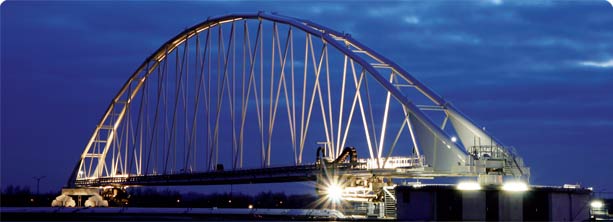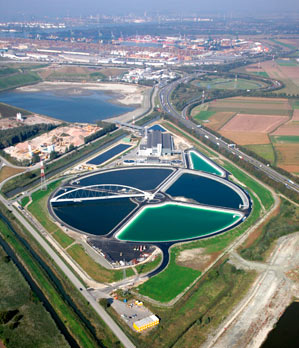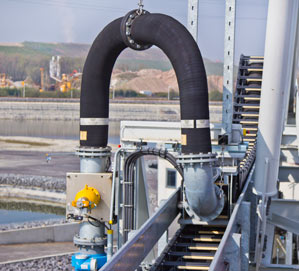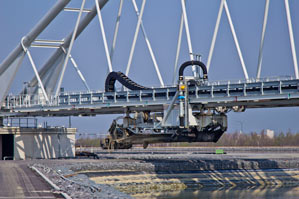Tested under real-life conditions
The world's largest plastic energy chain to this point, the E4.350, with an inner height of 350 mm and inner widths of up to 1,000 mm, can be deployed on oil platforms as well as in steelworks and heavy machinery construction. Wear, corrosion, oil and sea water resistance are among its technical features. A number of tests were conducted at the in-house igus® laboratory under real-life conditions in the run-up to the decision in favor of using this chain model. These tests ultimately confirmed the suitability of the – at the time – newly designed energy supply system in this demanding environment. "In particular, we examined the behavior of the filled hoses under real-life conditions", explains Frank Schlögel, who manages the Projects/Energy Chain Engineering area at igus®. "The temperature and pressure changes cause the hose to expand in the chain by as much as 60 cm." “
The tests show that the energy chain has no difficulty guiding even voluminous and heavy loads. The weight of the hose filled with silt and sediment is around 100 kg/m. A special design using glide rollers was developed to perfectly guide the hose within the energy chain and to minimize the resulting mechanical abrasion. These rollers, made from the tribologically optimized bearing material iglidur® J, are integrated into the opening crossbars. Light, corrosion-free and insensitive to dirt, they ensure that the energy supply system can glide without problem around-the-clock. This significantly reduces the friction caused by the hose in the chain, thereby ensuring stability. "For this and comparable cases, where we wish to supply our customers with ideally adapted solutions, our expertise in developing special plastic materials continues to pay dividends, in that we have the required know-how under our own roof. The variety of special plastic materials from the energy chain and bearing field, in combination with our in-house test laboratory, gives us the ability to conduct on-the-spot tests under realistic conditions, resulting in the best solution for the customer", states a confident Frank Schlögel.
"We were also convinced by the fact that the entire energy chain system is very compact", reminisces Joury van Gijseghem. "This was genuinely important to us, for instance, because we had to deploy drive cables in addition to the hoses, and could not provide an unlimited amount of space. " Moreover, in comparison to a steel chain, the plastic chain is much lighter. This not only provides savings on the required drive rating on the traveling pump systems, but also in the weight of the overall rotating bridge system. %. "For example, we can use smaller motors. On the one hand, these are less expensive, and on the other, the weight load on the bridge is further reduced. This in turn improves economic feasibility."
A specially-designed guide trough made of hot-dipped galvanized steel and floating moving ends are deployed in addition to the energy supply. These are needed to compensate for potential lateral displacement tolerances. The energy chain, which is filled with hoses and cables, is now always reliably guided over the entire length under any weather conditions. Despite operational difficulties and environmental conditions, no failures have been recorded to the present day.



